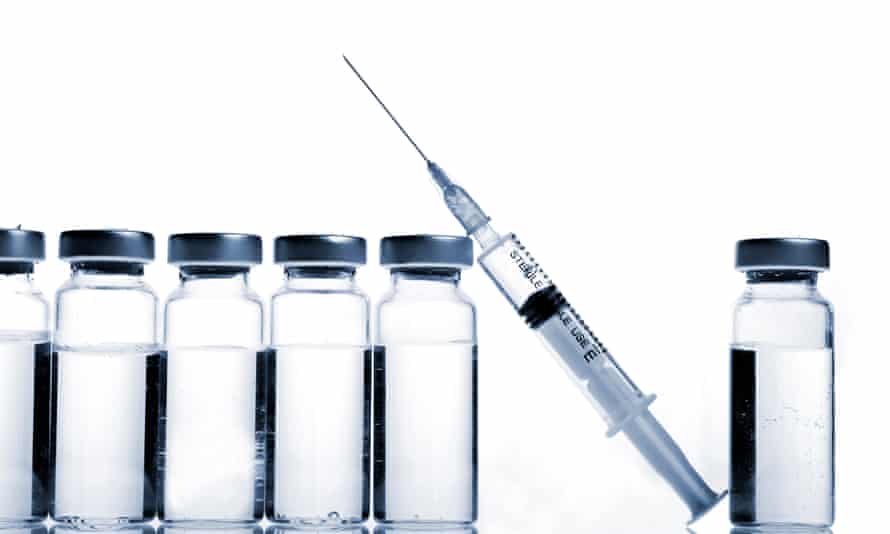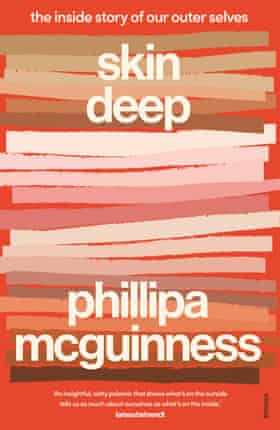It was only relatively recently in the history of medicine, the 19th century, that skin was understood to be a separate organ rather than a kind of porous sieve. Even now we take skin’s miraculousness for granted. It protects us from the elements and from pathogens, it regulates body temperature and remakes itself at a cellular level every month.
Historically skin was seen as a carapace or “flesh bag” into which more important organs were stuffed. That attitude may linger in the medical profession today, where being a cardiologist or a neurosurgeon perhaps seems like a more glamorous position than a dermatologist.
“I didn’t want to be a dermatologist at all when I began in medical school. I was thinking it was a dusty and smelly specialty,” says Prof Pascale Guitera, a Sydney dermatologist who trained in Paris: A confocal microscopy specialist, Guitera is now a director of the Sydney Melanoma Diagnostic Centre. “Things were moving faster in Australia, with so much skin cancer and melanoma,” she says of relocating from Europe.
Now, dermatology in Australia finds itself at the intersection of competing and growing tensions: medical, aesthetic and, it has to be said, reputational. Public underspending on the health, protection and management of Australian skin becomes stark when placed against the vast amounts consumers spend on cosmetic procedures that are not medically essential.

There are only 550 dermatologists in Australia, with the shortage most acute outside the cities, which means GPs are at the frontline of skin complaints. This should be fine – it’s how our health system is structured – except that within medical faculties undergraduate dermatology training is surprisingly brief. Skin cancer clinics run by GPs fill some of the gap, but they too require minimal extra training.
In its 2021-22 pre-budget submission, the Australasian College of Dermatologists (ACD) called for increased federal investment for dermatology consultant positions in public hospitals, and sought more money for training positions.
The submission projected that there will be close to 15{362bf5cdc35eddfb2532d3c23e83b41deb229c4410d15cb1127c60150cbd4488} fewer dermatologists than the number required to meet demand by 2030, and that the situation was drastic in regional areas.
This demand comes from skin patients, but dermatology is a popular choice for medical graduates as well, with more applicants than there are training positions.
Dr David Francis, a former ACD president, says that chronic underfunding of training programs and consultant positions in hospitals was a major problem, contributing to the shortage.
This gap seems ironic in a land of blazing sunshine that, thanks to the forces of colonialism, dispossession and migration, is inhabited by many fair-skinned people prone to skin cancers. Most people know we have one of the highest rates of skin cancer in the world, but the statistics are sobering: two in three Australians will be diagnosed with some kind of skin cancer by the age of 70, and numbers are rising.
Most of these will be non-melanoma skin cancers, but millions of regular skin checks and excisions, and the ongoing management they require, are a mighty cost to the health system. This exact sum is not easy to quantify, because the most common skin cancers aren’t even registered by the system. If every skin cancer was registered, “it would break the system”, one specialist tells me.

Melanoma is not always the life sentence it used to be, but surgical and immunotherapy treatments are expensive, costing the health system more than any other kind of cancer: about $1.68bn annually, according to the Australian Institute of Health and Welfare.
Dermatologists and public health experts are the first to remind us that skin cancer can be prevented through basic sun protection, but investments in public education have shrunk.
The Cancer Council and the ACD issued a call to action last year, noting “there has not been a national skin cancer prevention mass-media campaign for over a decade”.
The growth of individual spending on cosmetic skin procedures, on the other hand, is stratospheric. Industry reports regularly suggest Australian spending on cosmetic procedures tops $1bn; with laser treatments, chemical peels and even injectables like Botox and fillers widely available from suburban shopping centres.
Some dermatologists offer the same kinds of treatments as those available in cosmetic clinics (including injectables), alongside essential medical consultations.
You don’t need to be an economist to know what happens when demand outstrips supply. Rodney Hanratty, a fair-skinned regular dermatology patient who has had many skin cancers removed, including a melanoma, says: “Dermatologists are in the absolute sweet spot in the medical profession in the 21st century.”
Applications for specialist training may be as high as they are now because young doctors see dermatology as a specialty that combines clinical and surgical skills across a diverse range of conditions and diseases, and one where beautiful skin and manageable hours are attainable along with significant financial rewards.
One retired dermatologist, an esteemed clinician and researcher who has witnessed the popularity of his specialty transform throughout the course of his career, tells me that dermatologists are turning themselves into glorified beauticians.

There is certainly a newly glossy aura in the profession, with US beauty website Byrdie branding dermatologists as “the new influencers”. Internationally, dermatologists have become social media stars, offering skincare tips to millions of viewers while recommending their own branded products; or the creams, serums and sunscreens they endorse.
In Australia, dermatologists have at least four years of specialist training beyond their initial medical degree. Plastic surgeons have a minimum of five years’ postgraduate training. Many who have gone through that extensive specialist training do fill, literally, the seemingly bottomless demand for cosmetic procedures.
But specialists are not the only ones offering such treatments. In Australia, cosmetic surgery is less regulated and less transparent than the same work done by qualified plastic surgeons and dermatologists, and the system has allowed invasive cosmetic procedures to flourish outside of traditional medical environments.
Cosmetic surgery is not a recognised field of specialisation in medical schools. It is not claimable on Medicare and any GP can call themselves a cosmetic surgeon, with only minimal training, while some treatments can be performed by nurses or beauticians working with minimal medical supervision.
Cosmetic procedures are seen as just that, cosmetic or superficial, yet the complications can be deep. Patients may face infections from surgery sold to them as “minor”; excessive filler that does not dissolve; skin burns from laser treatments or lopsided facial paralysis from incorrectly administered Botox.
Plastic surgeon Anand Deva says he has had some patients who don’t even remember what has been injected into them, or by whom.
“A procedure that’s about lifestyle and comes with a vague promise to make you look and feel better, but that … could leave you potentially disfigured, hurt or damaged for the rest of your life – how do you weigh that up?” Deva asks. “Often the potential harm is minimised, and the promise of glamour and beauty is maximised.”
When things go wrong, Deva says, “there’s guilt and shame” from the patient. “‘I was just being vain, it serves me right’ … How deep you want to go into that space? It’s bottomless really.”
This dire lack of regulation will be addressed, one hopes, after the recently announced formal review of the cosmetic surgery industry to be undertaken by the Australian Health Practitioner Regulation Agency (AHPRA). The inquiry will also consider the way cosmetic surgeons use social media and price discounting to promote medical services driven more by profit than patient need.

We find it easy to mouth platitudes about it being what’s on the inside that counts, but the health and appearance of our skin involves many challenges, medical and not. We are far less honest about how deeply we care about what is on the outside.
When that attitude extends to a lack of funding, or a lack of oversight, it can come at a high price.
